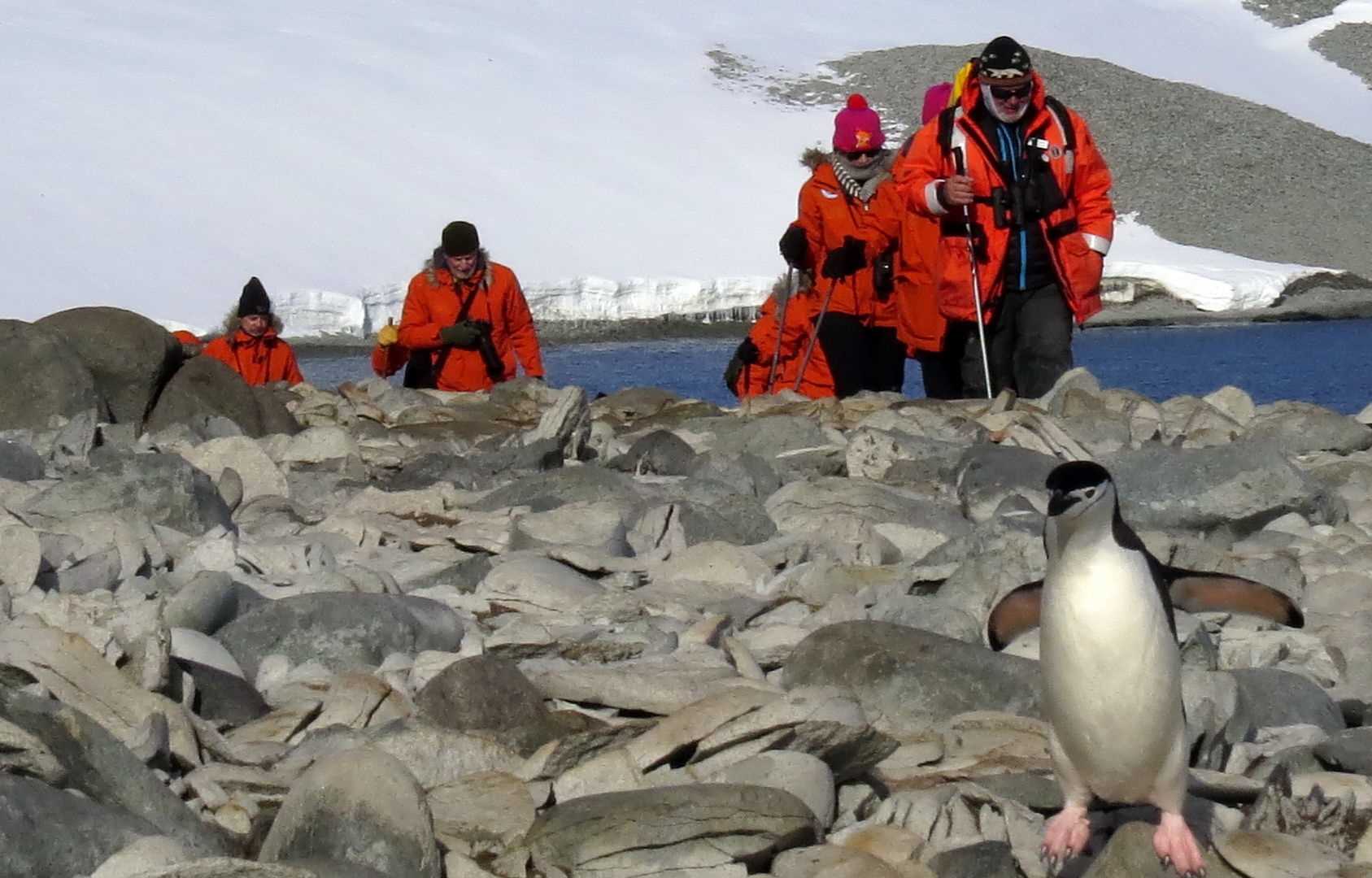A sunny morning welcomed National Geographic Orion to the north-eastern side of the Antarctic Peninsula. The destination was Astrolabe Island, a rocky island about three miles long, which was first discovered by the French naval expedition led by Jules-Sebastien Cesar Dumont d’Urville in 1837 and named after his flagship. The triangular-shaped cliffs that formed the coastline of this rugged island, aptly named “Dragon’s Teeth”, were a great environment for finding nesting skuas, Wilson’s storm petrels, and Antarctic fulmars.
Curious Antarctic fur seals occupied the landing beach. Their antics of practice and pretend fights with each other, as well as their barks, growls, and cries, provided for much entertainment to all. A stroll on an icy patch of fresh snow guided us to the slopes filled with chinstrap penguins, who continued on with their busy lives, ignoring all visitors. The symmetry of their faces were an attractive target to photographers. A Zodiac cruise complemented our visit to this wildlife-filled island: there were leopard seals in the water, Weddell seals basking on the beach, and Antarctic fur seals playing in shallow pools.
And yet the wildlife sightings were not finished for the day. A call from the bridge brought us all to the bow and decks to see humpback whales. These 50-plus feet marine creatures were feeding very close to the ship—we could see clearly their distinctive dorsal fins, blows, and tail flukes surfacing everywhere we looked.
Then we sighted the largest tabular iceberg floating in this part of Antarctica: A57a. This is the remnant of a larger iceberg that broke off Larsen C Ice Shelf in 2008. It’s approximately 11 miles long by five miles wide, and that’s just a rough calculation of only what is floating above the surface! We launched Zodiacs with intrepid guests that wanted to see this wall of ice up close, while our ship sailed parallel to the face of the iceberg, providing an excellent sense of scale for this icy giant.









